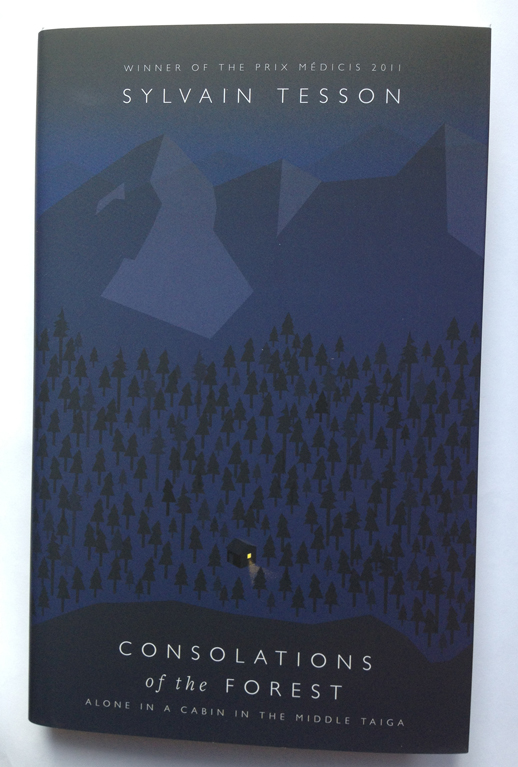Sylvain Tesson
Consolations of the Forest
(Allen Lane, hardback)
Review by Emma Warren.
Sylvain Tesson’s account of six months living alone in a ten foot cabin by Lake Baikal in Siberia is an idiosyncratic meditation on solitude and hermitage, although Siberia’s way more social than you’d expect. The French travel writer’s nearest neighbor is five hours walk north but despite that, a steady stream of visitors punctuate the silence. There are the random noisy Russians who come and play hardman on the thick frozen ice; regular kayak visits from fishermen, scientists and woodsmen from around the lake and nature reserve; and towards the end of his half year away, two painter friends who provide the bridge back to Paris.
Life quickly becomes a hum of waking, chopping wood, fishing for char, reading, writing, drinking vodka, and occasionally, smoking cigars at 3,280 feet. At one glorious point, he’s on the edge of a ridge “sitting on a branch of dwarf pine, leaning back against a boulder, dangling my legs over the drop with a stand of golden larches far below… Every smoker dreams of disappearing into his own cloud.”
It’s also the most boozy nature book I’ve ever read, with Tesson downing shots with the woodsmen of the taiga, or just gobbling down the shots by himself before sliding around on the frozen turquoise ice of the lake. One morning he drinks a bottle of vodka with two Russian fishermen who drop in. That evening he canoes through his hangover for six hours to join them, 15 miles down the lake, at another guy’s cabin. That night they “feed the fire, swallow smoked fish, and empty bottles. I would like to collapse in the warmth of a cabin but Russia has taught me never to count on the slightest respite after any effort and always to be prepared to trash myself with vodka after having worn myself out mile after mile.” It’s like a high, hardcore Robert MacFarlane.
The star of the book, though, is nature. The frozen lake is punctuated with shock wave cracks and fissures and it’s noisy – banging and booming as the ice begins the granular process of breaking up. It’s a ‘blue-leaded window with alabaster panes’. In another passage, light ‘irradiates the veins… infusing them with trails of gold. Pearly coils trace knots resembling photos of stardust clouds’. There are lynx tracks, encounters with bears and stags, and half way through, the addition of two friendly cabin dogs. Solitude never looked quite so fulfilling.
